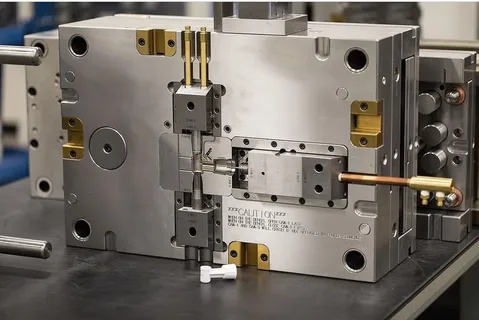Prototype Plastic Injection Molding is a vital step in the product development process, allowing designers and manufacturers to create and test parts before committing to full-scale production. While the technique offers numerous benefits, including cost-efficiency, precision, and rapid turnaround, several common mistakes can lead to wasted resources, delays, and poor-quality parts. Understanding and avoiding these pitfalls ensures a smoother, more effective prototyping phase and paves the way for successful production.
In this article, we will explore the most frequent mistakes made in Prototype Plastic Injection Molding, why they occur, and how you can prevent them. By addressing these issues early, businesses can save time, reduce costs, and improve product quality.
Ignoring Material Selection for Prototyping
One of the most significant mistakes in Prototype Plastic Injection Molding is neglecting the importance of material selection. Many designers assume that any plastic material will work for the prototype since the final product will use the correct material. However, this approach can lead to inaccurate results during testing and validation. Choosing the wrong material can affect durability, flexibility, and thermal resistance, which means your prototype might not perform as expected under real-world conditions.
To avoid this, it’s crucial to select materials that closely mimic the properties of the production-grade plastic. While it might not always be feasible to use the exact material due to cost or availability, aim for alternatives that replicate key characteristics such as strength, rigidity, and chemical resistance. This ensures that your prototype delivers accurate data and reduces the risk of design flaws going unnoticed until mass production.
Overlooking Proper Mold Design
Mold design plays a critical role in Prototype Plastic Injection Molding, yet it is an area where many companies make costly mistakes. A poorly designed mold can lead to defects such as warping, shrinkage, or incomplete filling. Common errors include ignoring parting line placement, improper draft angles, and inadequate venting. These issues not only affect the quality of the prototype but also increase the chances of expensive rework and longer lead times.
To prevent these problems, it’s essential to work with experienced mold designers who understand the nuances of prototyping. Incorporate features like proper draft angles to ensure easy part ejection and plan for effective cooling channels to maintain consistent temperature during molding. Using advanced software tools for simulation and mold flow analysis can also help identify potential issues early in the design phase, saving both time and money in the long run.
Skipping Tolerance and Dimensional Accuracy Checks
Another common mistake in Prototype Plastic Injection Molding is failing to pay attention to tolerance and dimensional accuracy during the prototype phase. Designers sometimes assume that because it’s only a prototype, precision isn’t critical. However, even small deviations from the intended dimensions can lead to functional issues, especially in assemblies where multiple components must fit together precisely. Ignoring these checks can result in costly design revisions later in the process.
The best way to avoid this mistake is to incorporate rigorous quality control measures from the start. Use tools such as coordinate measuring machines (CMM) or 3D scanning to verify that the prototype meets the specified tolerances. Additionally, communicate clearly with your molding partner about tolerance requirements and ensure they have the capability to meet those specifications. Accurate prototypes provide reliable data for testing, reducing the likelihood of surprises during production.
Rushing the Prototyping Process
Time-to-market is a significant concern in many industries, which often leads companies to rush through Prototype Plastic Injection Molding. While speed is essential, sacrificing thoroughness in the name of urgency can lead to errors that delay the project even further. Skipping critical steps such as design validation, material testing, or mold flow analysis increases the risk of defects, resulting in multiple iterations and higher costs.
To avoid this, strike a balance between speed and accuracy by implementing a structured prototyping process. Set realistic timelines that allow for proper design reviews and testing. Consider using rapid tooling techniques or 3D-printed molds for initial iterations to save time without compromising quality. Remember, investing extra time upfront to validate your prototype can significantly reduce overall development time and costs by preventing costly mistakes during production.
Neglecting Communication with the Molding Partner
One of the most overlooked yet crucial aspects of Prototype Plastic Injection Molding is effective communication between the client and the molding partner. Misunderstandings regarding design specifications, material requirements, or timeline expectations can lead to significant setbacks. For example, failing to clarify surface finish requirements or assembly tolerances can result in prototypes that do not meet functional or aesthetic needs.
To prevent these issues, establish clear communication channels with your molding partner from the beginning. Provide detailed documentation, including 3D CAD files, material specifications, and tolerance requirements. Regularly review progress through updates and design checkpoints to ensure alignment throughout the project. Building a collaborative relationship with your molding partner not only reduces the likelihood of errors but also fosters trust, leading to a more successful and efficient prototyping process.
Conclusion
Prototype Plastic Injection Molding is an essential step in the product development lifecycle, providing a cost-effective and efficient way to test designs before committing to large-scale production. However, common mistakes such as ignoring material selection, overlooking mold design, skipping tolerance checks, rushing the process, and neglecting communication can undermine its benefits. By understanding these pitfalls and implementing best practices, businesses can maximize the value of prototyping, reduce time-to-market, and deliver superior products.
